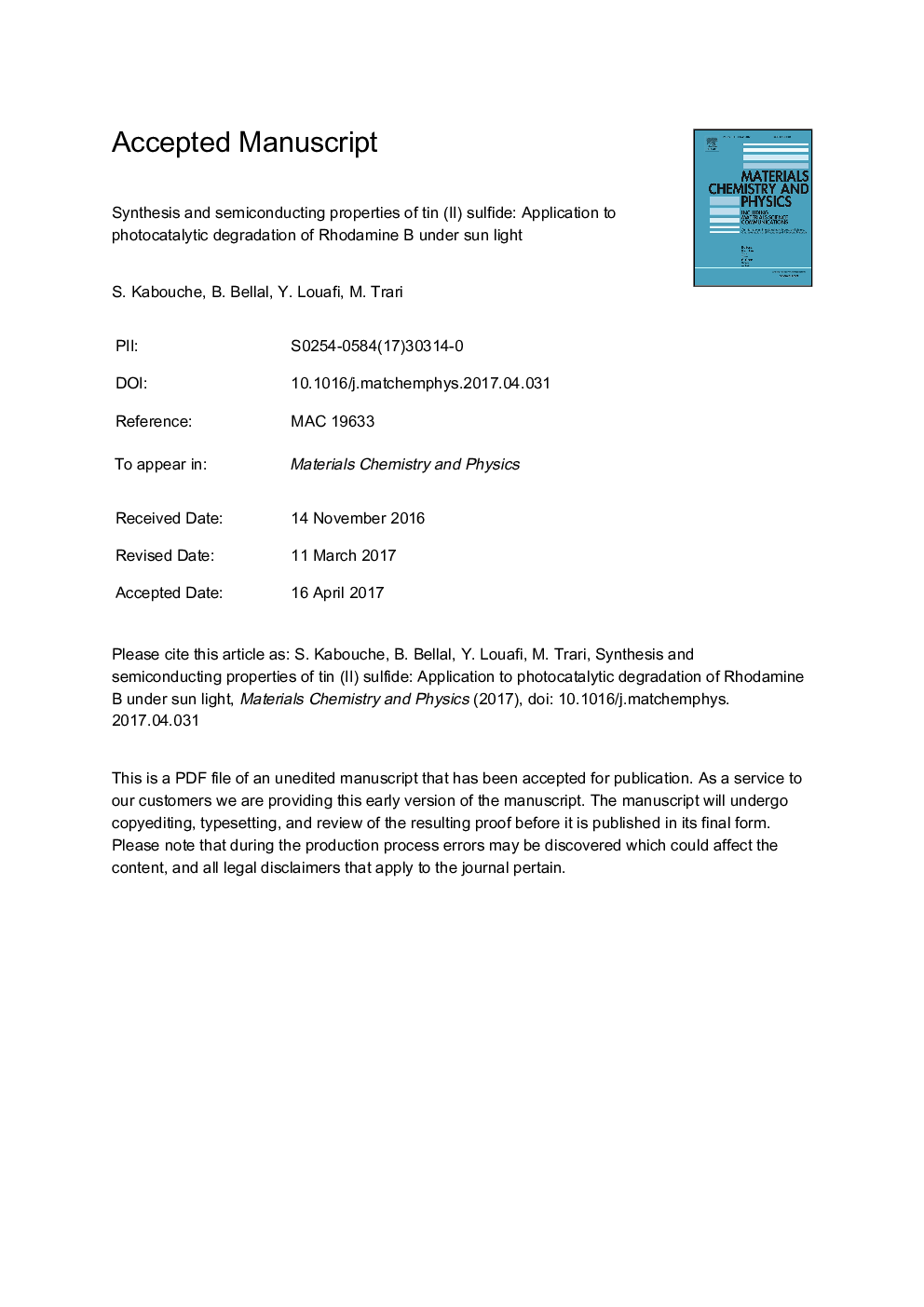| Article ID | Journal | Published Year | Pages | File Type |
|---|---|---|---|---|
| 5448192 | Materials Chemistry and Physics | 2017 | 26 Pages |
Abstract
We have investigated the semiconducting and photoelectrochemical properties of SnS grown by a template-free chemical route using thiourea as precursor. Tin(II) sulfide is characterized by X-ray diffraction, scanning electron microscopy, diffuse reflectance and Raman spectroscopy. The X-ray diffraction indicates an orthorhombic SnS phase (SG: Pbnm) with a crystallite size of 52 nm while the optical measurements give a direct band gap of 1.33 eV. The Mott-Schottky plot exhibits a linear behavior, characteristic of n-type conductivity with a flat band potential of 0.19 VSCE and a donor density of 4.12 Ã 1018 cmâ3. The electrochemical impedance spectroscopy (EIS) measured in the range (10â2-5 Ã 104 Hz) shows one semicircle attributed to the bulk resistance (Rb = 20.37 kΩ cm2). The conduction band, located at 4.84 eV below vacuum, is made up of Sn2+:5p while the valence band (6.17 eV) derives mainly from S2â: 3p character. The energy band diagram, constructed from the photoelectrochemical characterization, predicts the photodegradation of Rhodamine B on SnS by H2O2 generated photoelectrochemically. 88.46% of the initial concentration (10 mg Lâ1) disappears after adsorption and 4 h of exposure to solar light. The photoactivity is nearly restored during the second cycle and follows a second order kinetic with a rate constant of 1.55 Ã 10â3 mg-1 L minâ1.
Related Topics
Physical Sciences and Engineering
Materials Science
Electronic, Optical and Magnetic Materials
Authors
S. Kabouche, B. Bellal, Y. Louafi, M. Trari,
